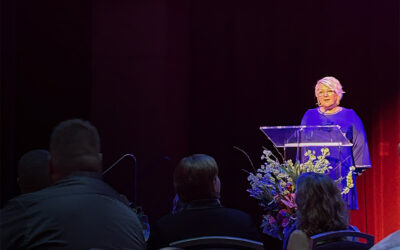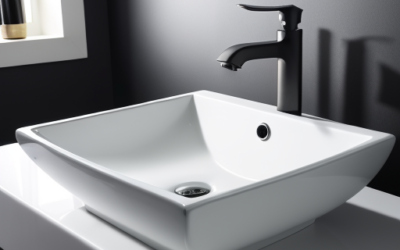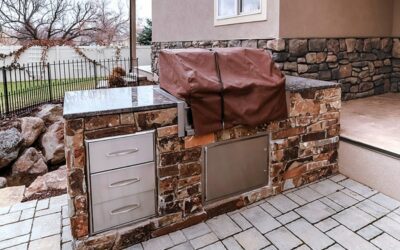A fun and interesting article from one of my trade publications, Kitchen & Bath Business…. enjoy!
Shattering a common stereotype many people cling to about the sexes, men and women are more alike than different. At least this is true among men and women in the über-attractive upscale consumer segment. But there are a few critical differences between the sexes and these insights can make a difference, whether you’re designing a kitchen for a client or deciding what products to promote in a showroom or developing an innovation to make homeowners’ lives easier.
Researchers at RICKI, the Research Institute for Cooking & Kitchen Intelligence, dug deeper into data from their recent study titled, “Top of the Line: Insights into Upscale Consumers & their Kitchens.” The analysis focused on 700 upscale consumers or those in households with incomes of $100,000 plus (251 men and 449 women).
MARKETING DREAM KITCHENS TO THE SEXES
When men and women were asked to select words they associate with their dream kitchens out of a list of nearly two dozen options, the top two picks of upscale men and women were reversed. Upscale men tended to select as their first choice “well-equipped,” referring mostly to appliances, whereas upscale women picked “organized.”
Brenda Bryan, RICKI’s executive director and a long-time home improvement industry insider, worked with her team to make sense of the data. “It’s interesting that out of a list of 23 words they could pick from to describe their dream kitchen, men are significantly more likely than women to pick only one word—the word “modern”—whereas women focus on more nesting-oriented words like “family” in the top five and, on down the list, words like ‘warm’ and ‘social,’” said Bryan.
| Upscale Men | Upscale Women | |
| 1st | Well-equipped | Organized |
| 2nd | Organized | Well-equipped |
| 3rd | Comfortable | Comfortable |
| 4th | Open | Open |
| 5th | Modern | Family |
Furthermore, when presented with a list of 25 distinct products found in today’s upmarket kitchens—from pizza ovens to wall-mounted pot fillers to cabinets made from exotic woods—a number of meaningful differences among the sexes emerged. “Like most of us, upscale women are really looking for ways to make their kitchens work better for them,” said Bryan. “Men are focused on function somewhat as well, but guys really want more power. Men, for example, want bigger dishwashers, commercial-grade or at least commercial-looking appliances and ventilation that makes a statement.”
| Upscale Men | Upscale Women | |
| 1st | Larger three-rack dishwasher | Customized cabinet storage |
| 2nd | Professional-grade appliances | Double Oven |
| 3rd | Unique vent hood | Larger three-rack dishwasher |
| 4th | Customized cabinet storage | Unique vent hood |
| 5th | Water filtration with instant hot/cold | Professional-grade appliances |
SIMILAR ATTITUDES
Nevertheless, when study respondents were shown a dozen statements dealing with attitudes about design, brands and the home, responses from men and women were surprisingly similar when saying which described them “completely.” There were few differences between the sexes on statements about liking to cook, trying new recipes and wanting their kitchens to say something about them. Statistically meaningful differences emerged for only three of the 12 statements:
• My kitchen is my favorite part of my home. (24% of upscale women “completely agree” with this statement vs. 18% of men)
• I like to coordinate all of my metal finishes in a room such as the appliances, lighting, door and cabinet hardware and faucets. (39% of upscale women “completely agree” with this statement vs. 28% of upscale men).
• If I have to choose between brand name and features, I will chose features. (30% of upscale women “completely agree” with this statement vs. 24% of upscale men)
“Our research indicates that upscale men are more brand-conscious than women,” said Bryan. “Yet the majority of both upscale men and women say they are willing to pay more for products that reflect their personal style.”
The study findings have implications for marketing and branding as well as new product development. While upscale men and women have a great deal in common, Bryan stresses that it is important to keep in mind the subtly nuanced gender differences when marketing to the wealthier consumers. “Upscale women, for example, will gush when designers or showroom salespeople point out customized storage solutions for cabinetry, while their husbands may be daydreaming about a certain commercial range.”
LOOKING FORWARD
The study went on to identify what might make upscale consumers initiate a remodeling project. When survey respondents were asked what would most likely motivate them to remodel their kitchens, the top response for both upscale men (41%) and women (33%) was that they were thinking about staying in their homes for a long time.
“One of the findings that stands out for me is that around three in 10 upscale consumers overall are more inclined this year than they were a year ago to remodel a kitchen or bath, which bodes well for a rebound,” said Bryan. “This is true for more than a quarter of upscale women and nearly a third of upscale men. With home sales still slumping, there’s a segment of upscale homeowners who know they couldn’t sell right now if they had to. They’ve made their minds up to stay put. This market presents a tremendous opportunity for kitchen and bath designers, retailers and manufacturers.”
 Article written By Erin Gallagher as posted
Article written By Erin Gallagher as posted—Erin Gallagher is Chief of Insights for the Research Institute for Cooking & Kitchen Intelligence (RICKI), an independent, membership-based organization of manufacturers, retailers, wholesalers and publications whose revenues come from sales related to activities that take place in the kitchen, including kitchen remodeling. For more information, visit www.kitchenintelligence.org
.
Methodology: “Top of the Line: Insights into Upscale Consumers & their Kitchens” was conducted to better understand attitudes about and usage of home kitchens among upscale consumers in the United States, as well as their future remodeling plans. The survey was conducted online among 1,087 consumers 18 years old and older in October and November, 2009, including 251 upscale men and 449 upscale women.




